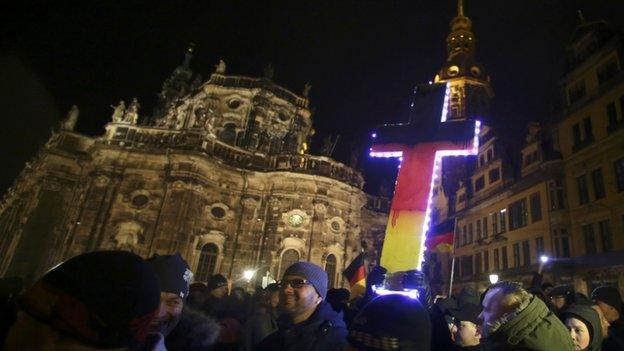Dresden's firebombing haunts rebuilt German city
- Published
Ursula Elsner was 14 at the time of the bombing: "We clung on but one woman didn’t make it. The firestorm grabbed her."
I hadn't expected to see an angel. The morning was grey and bitter.
Dressed in white, wings and halo wobbling, he hurried down the cobbled street towards the Frauenkirche, the Church of Our Lady.
As a couple of visitors went past him into the church, he put his collecting bowl on the ground and froze into a well-rehearsed position.
A woman sees me staring at him and stops to talk. "I never thought they'd rebuild our Frauenkirche," she says.
On 13 Feb 1945, the church was destroyed in allied bombing raids that engulfed Dresden in an inferno.
Terrified people clung to lamp-posts to avoid being swept away by the hurricane force wind it created.
Under their feet, people suffocated in cellars as the buildings above them burned down. It was, in the words of one survivor, like being in hell.
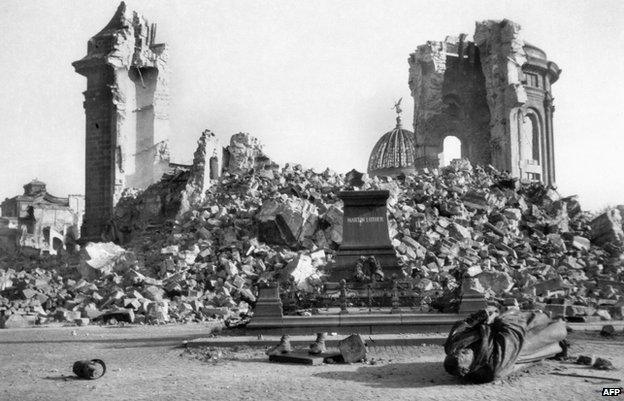
The Frauenkirche (Church of Our Lady) and Martin Luther Memorial were destroyed by the bombing
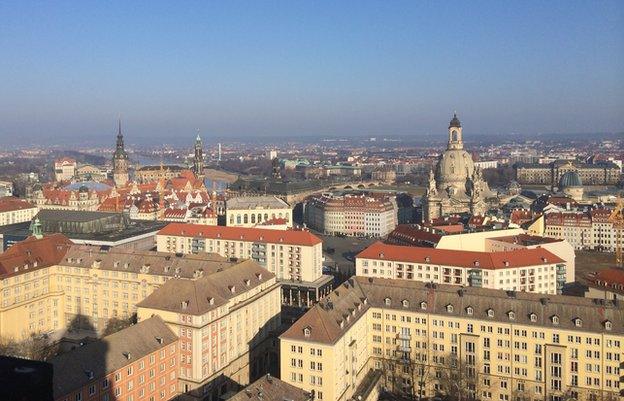
Dresden's Frauenkirche (right) was rebuilt after the war
The firestorm claimed the lives of 25,000 people.
Many other European cities were bombed too. But Dresden remains today a powerful symbol of war and destruction.
Marches 'against Islamisation'
"It's strange how a German city of the Second World War became a symbol for warfare," says Gorch Pieken, director of Dresden's Military History museum.
"The bombing made a nation of perpetrators into the victim."
Mr Pieken makes a connection between what happened here during World War Two and the growth of a contemporary movement known as Pegida, whose leaders claim to oppose the influence of radical Islam.
In reality, supporters include racists and right-wing extremists who would rather Germany did not allow in immigrants and refugees.
It has ignited public debate about high levels of immigration and divided opinion here. But this is the only part of the country where it has attracted substantial support.
Weekly marches in Dresden have attracted up to 25,000 people.
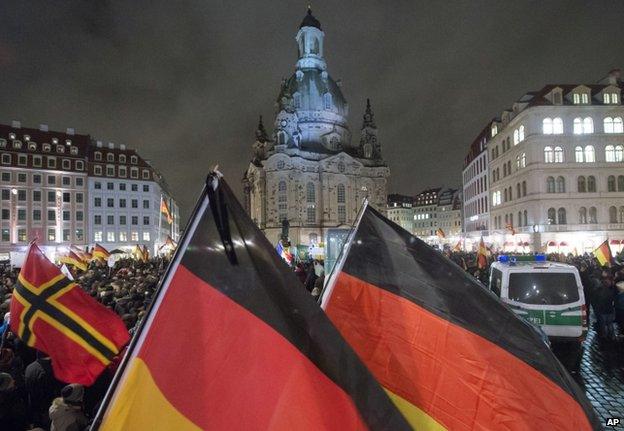
More recently the Frauenkirche has been the backdrop for Pegida marches
"I think it's to do with its victim role," says Mr Pieken.
"If you grow up at school being focused that yours was the worst hit city, that you're a victim of Second World War brutality, then it's easy to make a step to think you're a victim of everything else. I think Pegida supporters think they're a victim of modernity."
But in a candlelit cafe in the city's Neustadt district I met a group of students.
While they were horrified by Pegida, they were not concerned.
"It won't go anywhere," one girl said.
Perhaps she's right. The movement has splintered, its leadership in chaos.
Recent demonstrations here have attracted hundreds rather than thousands of supporters.
'No more hatred'
The students tell me they'll take part in the commemorations for the 70th anniversary of the Frauenkirche bombing. It is part of their history, they say, though not something they think about very often.
Across the city, it is hard to ignore. An old gas works has been fitted out with a 360-degree three-dimensional panorama of Dresden in the aftermath of the firebombing.
Taken from photographs of the ruined city, it gives a sense of the devastation that confronted the survivors.
Visitors walk in and blink in shock at the wreckage, the bodies, the fires still burning.
I see a little boy staring at three children in the image, one carrying a satchel and wiping his face, as they walk hand-in-hand past a corpse.
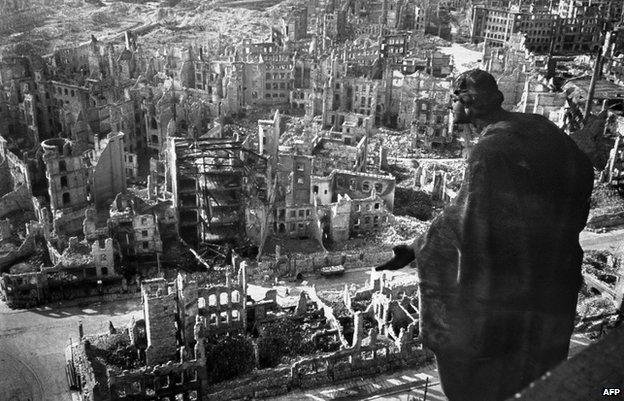
Dresden's historic old town was gutted by the firebombing
One couple stop to talk.
"I can't believe," the man says, "that we learn nothing from all this. Ukraine, the Balkans. The world learns nothing."
Later, I meet a woman who survived the firebombing.
Ursula was 14 when she spent the night in the square in front of the Frauenkirche.
Trapped by the flames, she thought she would die. Now she points up at the church.
"They rebuilt it in a lighter stone," she tells me.
For her the church is both a symbol and a reminder. "No more war, no more hatred. Never again."
- Published13 January 2015
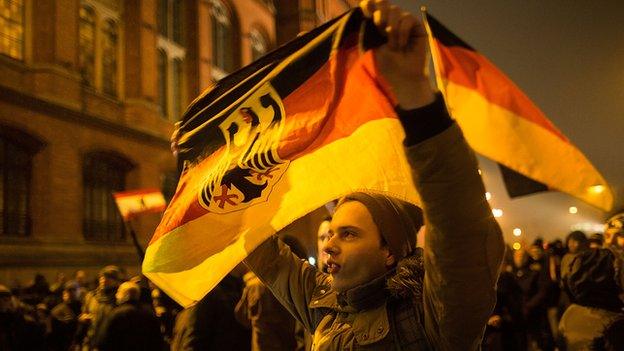
- Published18 January 2015
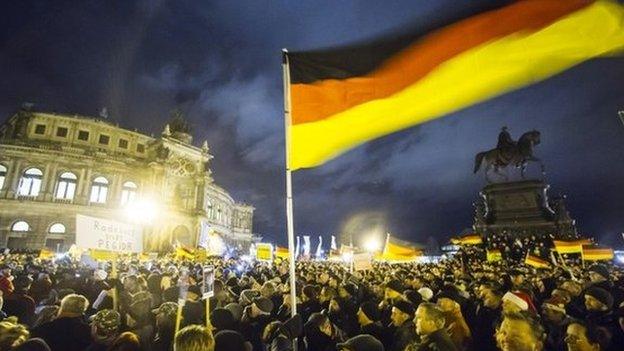
- Published16 January 2015
